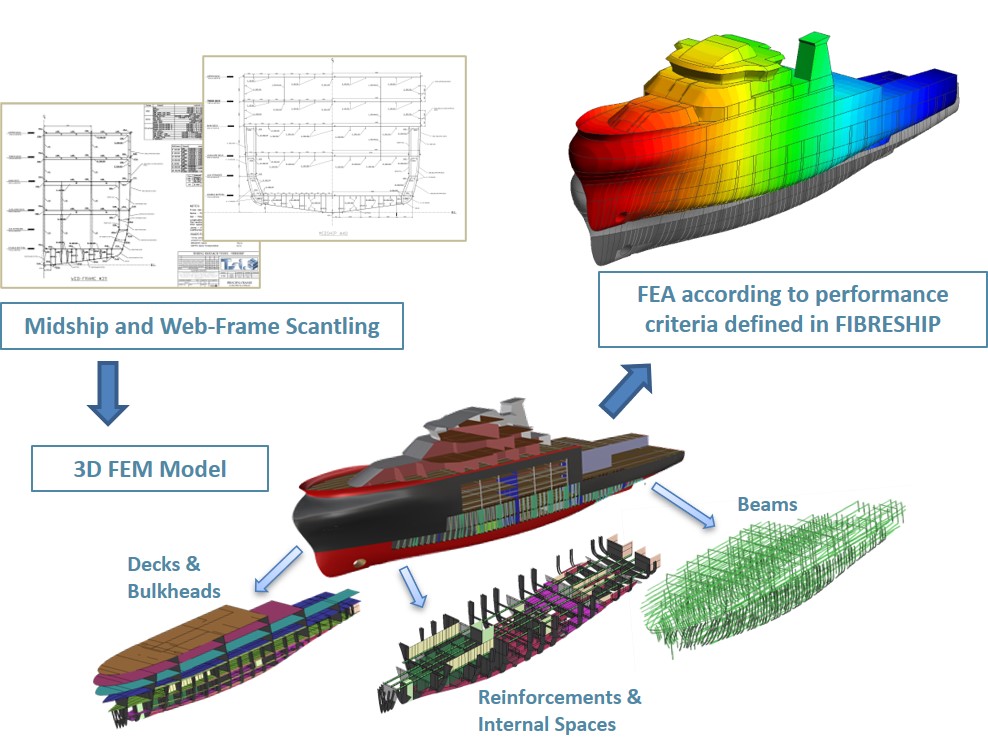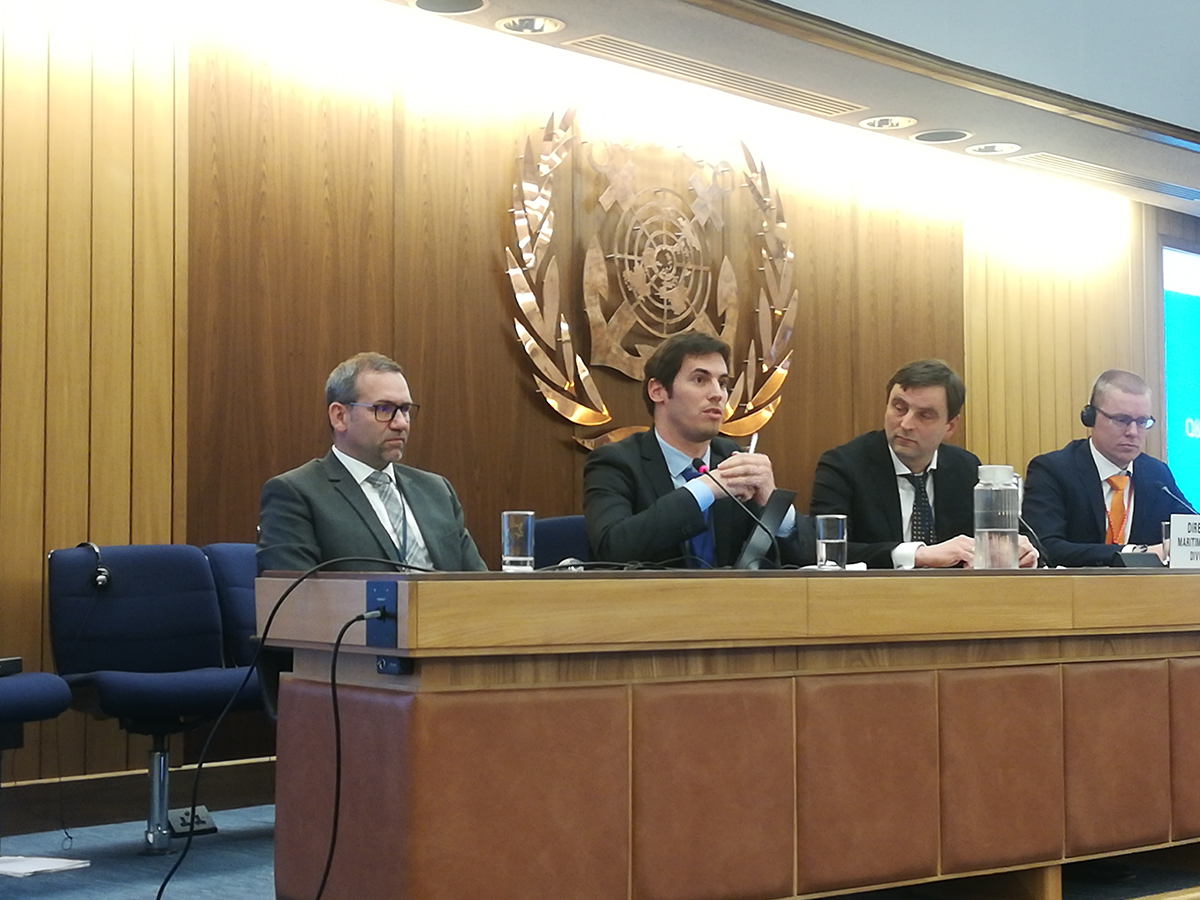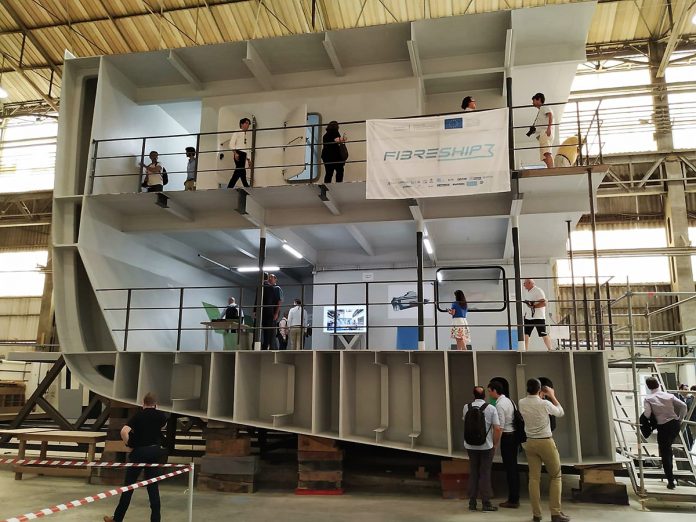Here, we learn that FIBRESHIP, a revolutionary R&D H2020 project has placed the spotlight on a new potential market in Europe, focused on the design and construction of large-length commercial vessels greater than 500 GT (50m-length) in lightweight composite materials
FIBRESHIP is an innovative R&D project led by the Spanish engineering company TSI and 18 European entities with broad expertise in naval architecture and shipbuilding participate. The project has had a budget of €11 million (£9.7 million) partially funded by the European Commission through the Horizon 2020 programme. FIBRESHIP has introduced a new business opportunity for the European maritime stakeholders, through the development of tools, designs and methodologies focused on the design and construction in composite materials of large-length commercial vessels over 500 GT (i.e. greater than 50m length).
The project has overcome the initial market reluctance as well as the current technical challenges and technology gaps to make feasible the building of these innovative vessels by developing guidelines and fostering a modification in the regulatory frameworks in innumerable European fora and events for the encouragement and engagement of maritime stakeholders. The use of these materials anticipates for the stakeholders, a significant reduction in the structural weight of the vessel implying a reduction in energy consumption and greenhouse gas (GHG) emissions, an increase of the payload and passenger capacity, as well as other benefits for the environment and shipowners. FIBRESHIP has developed all the necessary design tools, materials selection methodology, production techniques and shipping market analysis which enable the integral construction of large-length ships in fibre-reinforced polymers (FRP) materials.

Considering that three vessels categories were targeted in the FIBRESHIP project as the most promising for their market orientation (lightweight commercial vessels; passenger, transportation and leisure vessels; and special service vessels), a containership, a ROPAX and a fishing research vessel (FRV) were chosen as representative vessels: structural designs for each category respectively. These vessels were addressed using an iterative design process illustrated schematically in the flow chart of Figure 1. This strategy focused on how the structural design has resulted in a significant structural weight reduction and a set of effects in other fundamental parts of the design such as loading conditions, general arrangement, stability, powering needs, seakeeping, etc., due to the use of FRP materials.
A calculation of the structural weight reduction due to the extensive application of FRP materials in shipbuilding was performed. In general, it has been observed that the three vessel categories fully designed with lightweight FRP materials have a substantial structural weight reduction of up to 70% (considering insulation) in comparison to traditional steel-based vessels, resulting in considerable advantages in terms of bunkering consumption, payload cargo and passenger capacity plus greenhouse gas emissions. All these potential advantages have been studied case by case, considering the operation profile and requirements of the vessel.
The most important milestone of the FIBRESHIP project was the building of a ship-block of the designed fishing research vessel, which was integrally constructed in lightweight FRP materials using the materials, solutions and production techniques generated within FIBRESHIP project. This demonstrator has validated the technical feasibility and economic viability for the full construction of large-length fibre-based vessels. Photography of this ship demonstrator designed by TSI and built at iXblue shipyards is depicted in Figure 2. The demonstrator possesses dimensions of 11x11x8.6 m with a weight of 20 tonnes. The construction of this ship-block proves that the construction of the 85 m FRV is viable from an engineering perspective.

The FIBRESHIP project was born with the purpose to enhance the competitive position of the EU shipbuilding and shipping industry in the world. To demonstrate the benefits of lightweight FRP materials and foster their application in the design and construction of large-length vessels, a vast number of dissemination activities have been carried out in the context of the project. Accordingly, the FIBRESHIP project was presented along with the RAMSSES project at the International Maritime Organization (IMO) during its last Ship Design and Construction Committee (SDC-7) in February, with the idea of informing and engaging the attendees. The dissemination action was carried out by TSI and BV with the objective to engage IMO members (the Flag States and Maritime Associations) to schedule the evaluation of MSC Circ. 1574 and include the potential use of composites in next IMO SDC sessions.
Considering the fact that it will be a long path to evolve the current regulatory framework or set a new one for the using of composites in vessels greater than 500 GT, FIBRESHIP partners hope that the interest of the maritime stakeholders, as well as the results, innovations, developments and conclusions from FIBRESHIP and other projects focus on the use of FRP for large-length vessels, can be useful for the process of new regulatory frameworks that will enable the adoption of this promising technology in the waterborne transport and shipbuilding sector.
Please note: This is a commercial profile











